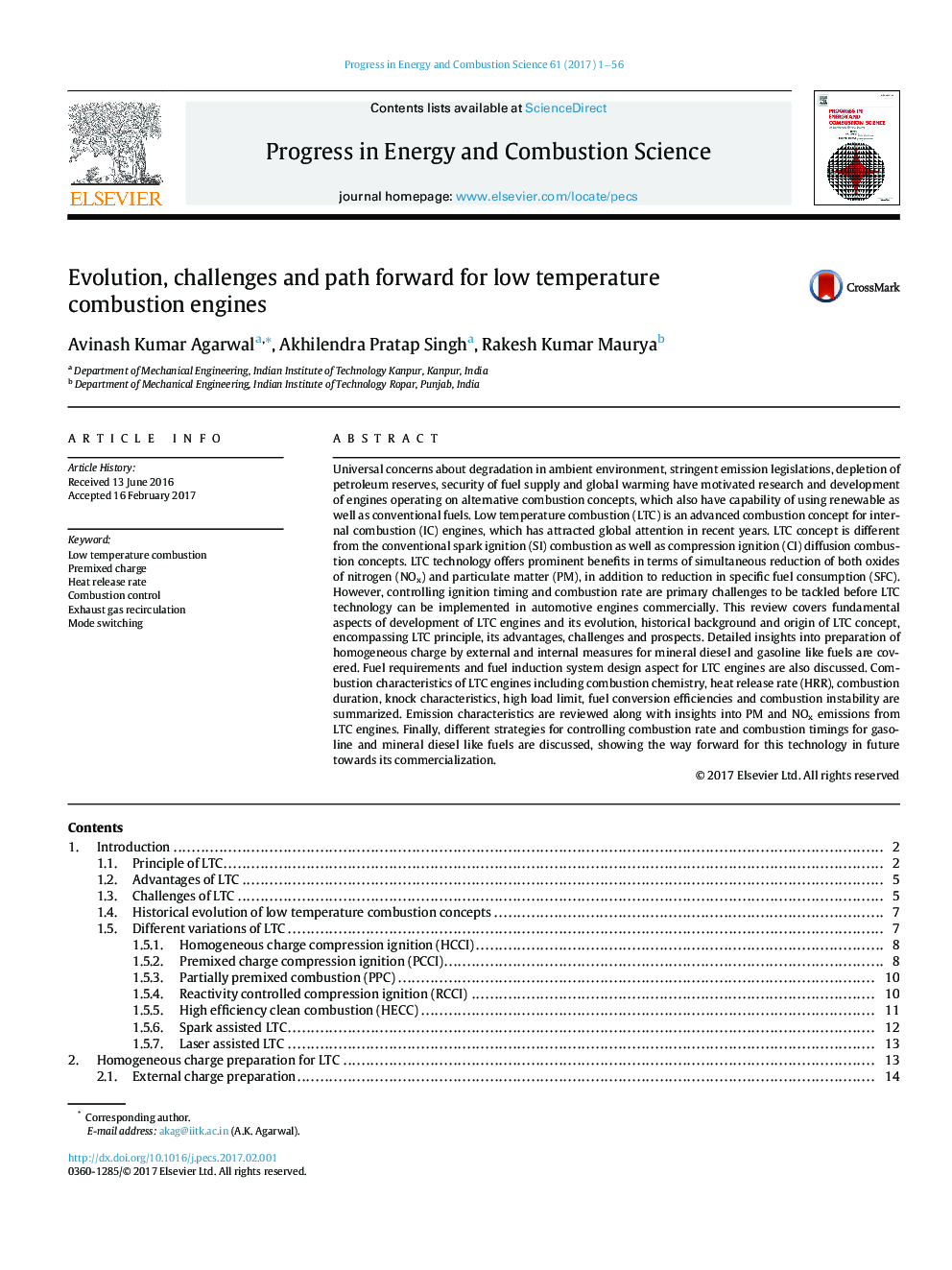| کد مقاله | کد نشریه | سال انتشار | مقاله انگلیسی | نسخه تمام متن |
|---|---|---|---|---|
| 4915610 | 1427947 | 2017 | 56 صفحه PDF | دانلود رایگان |
عنوان انگلیسی مقاله ISI
Evolution, challenges and path forward for low temperature combustion engines
ترجمه فارسی عنوان
تکامل، چالش ها و مسیر پیش رو برای موتورهای احتراق با درجه حرارت پایین
دانلود مقاله + سفارش ترجمه
دانلود مقاله ISI انگلیسی
رایگان برای ایرانیان
کلمات کلیدی
احتراق دما پایین، هزینه پیش پرداخت نرخ آزاد شدن حرارت، کنترل آتش سوزی، گردش بازگشتی گاز اگزوز، سوئیچ حالت،
موضوعات مرتبط
مهندسی و علوم پایه
مهندسی شیمی
مهندسی شیمی (عمومی)
چکیده انگلیسی
Universal concerns about degradation in ambient environment, stringent emission legislations, depletion of petroleum reserves, security of fuel supply and global warming have motivated research and development of engines operating on alternative combustion concepts, which also have capability of using renewable as well as conventional fuels. Low temperature combustion (LTC) is an advanced combustion concept for internal combustion (IC) engines, which has attracted global attention in recent years. LTC concept is different from the conventional spark ignition (SI) combustion as well as compression ignition (CI) diffusion combustion concepts. LTC technology offers prominent benefits in terms of simultaneous reduction of both oxides of nitrogen (NOx) and particulate matter (PM), in addition to reduction in specific fuel consumption (SFC). However, controlling ignition timing and combustion rate are primary challenges to be tackled before LTC technology can be implemented in automotive engines commercially. This review covers fundamental aspects of development of LTC engines and its evolution, historical background and origin of LTC concept, encompassing LTC principle, its advantages, challenges and prospects. Detailed insights into preparation of homogeneous charge by external and internal measures for mineral diesel and gasoline like fuels are covered. Fuel requirements and fuel induction system design aspect for LTC engines are also discussed. Combustion characteristics of LTC engines including combustion chemistry, heat release rate (HRR), combustion duration, knock characteristics, high load limit, fuel conversion efficiencies and combustion instability are summarized. Emission characteristics are reviewed along with insights into PM and NOx emissions from LTC engines. Finally, different strategies for controlling combustion rate and combustion timings for gasoline and mineral diesel like fuels are discussed, showing the way forward for this technology in future towards its commercialization.
ناشر
Database: Elsevier - ScienceDirect (ساینس دایرکت)
Journal: Progress in Energy and Combustion Science - Volume 61, July 2017, Pages 1-56
Journal: Progress in Energy and Combustion Science - Volume 61, July 2017, Pages 1-56
نویسندگان
Avinash Kumar Agarwal, Akhilendra Pratap Singh, Rakesh Kumar Maurya,
